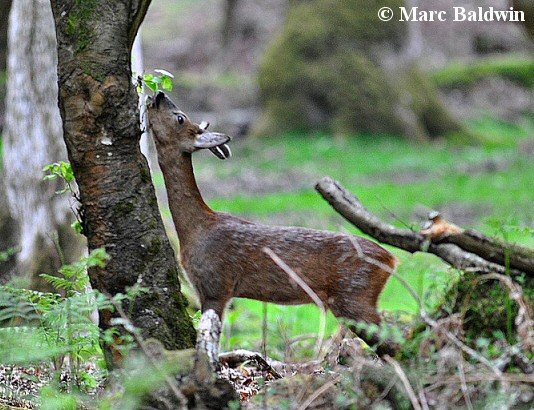In spring, the young, delicate shoots in the forest light up, bright and May green. The buds and shoots are the future of the forests as they allow young trees to grow. The problem for the trees is: Roe deer like to eat them, and especially their buds. With a bit of luck, the young, gnawed saplings will only take a few more years to grow than their non-bitten conspecifics. In the worst case, they will become stunted trees, or they will have to give up their fight for survival after a number of years. In this respect, roe deer can cause a great deal of damage and hinder the regeneration of many deciduous tree species according to Science daily.
In order to protect themselves against roe deer browsing, trees purposely put up a fight. By studying young beeches (Fagus sylvatica) and maples (Acer pseudoplatanus), biologists have now found out that trees are able to recognise precisely whether a branch or bud has been purposefully nibbled off by a roe deer — or just randomly torn off by a storm or other mechanical disturbance. The saliva of the animals gives them the signal. If a deer feeds on a tree and leaves its saliva behind, the tree will increase its production of salicylic acid. This hormone, in turn, signals to the plant to increase the production of specific tannins. It is known for some of these substances that they influence the feeding behaviour of roe deer, with the result that the deer lose their appetite for the shoots and buds. In addition, the saplings increase their concentrations of other plant hormones, growth hormones in particular. These hormones enhance the growth of the remaining buds to compensate for the lost ones.
“On the other hand, if a leaf or a bud snaps off without a roe deer being involved, the tree stimulates neither its production of the salicylic acid signal hormone nor the tannic substances. Instead, it predominantly produces wound hormones,” explains Bettina Ohse, lead author of the study. The scientists reached their conclusions by outsmarting the saplings: They simulated a roe deer feeding on them by cutting off buds or leaves and trickling real roe deer saliva on the cut surface from a pipette. Shortly after, they recorded the concentrations of the hormones and tannins in the saplings.
“Following this initial fundamental research, it would now be interesting to also examine other tree species and their defence strategies against roe deer,” says Ohse. “If some turn out to be better defended, these species could possibly be used more in forests in the future.
N.H.Kh

